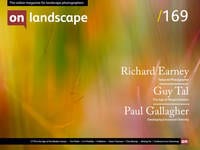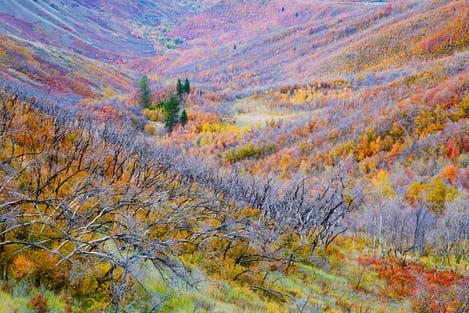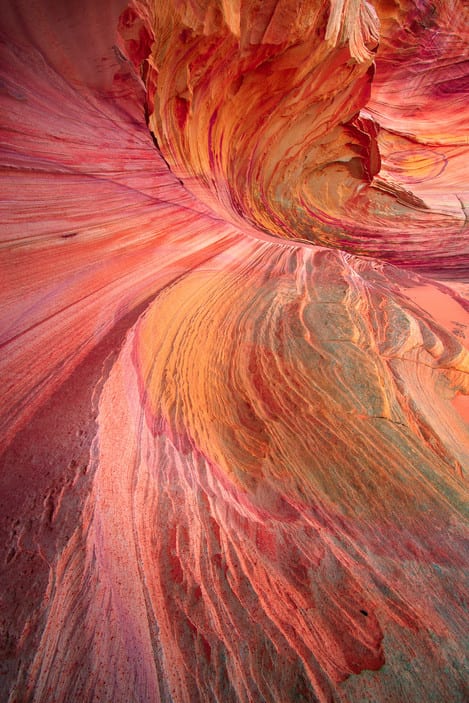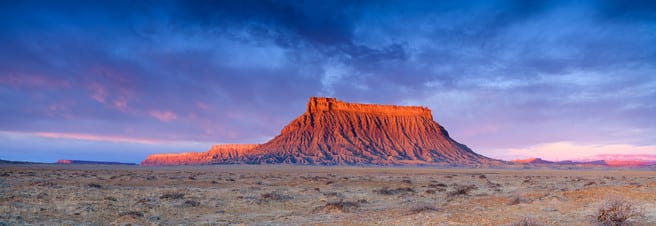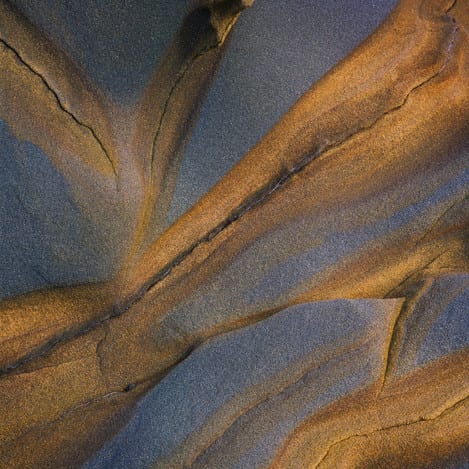Current trends in landscape photography from a historical perspective
It is common in art to revive the styles and sensibilities of older periods. Such revivals often correlate with similar historic circumstances. For example, classical art, dating back to the days of Ancient Greece (and later Rome), coincided with an era of progress in democracy, science, and philosophy. In the 18th century, a movement in art now referred to as Neoclassicism arose alongside the Age of Enlightenment, also marked by progress in freedom of expression, science, art, and philosophical thinking.
Following the Enlightenment, Romanticism—a movement celebrating natural beauty, emotions, and individualism—came about, partly as a response to the drudgery of workers in the early days of the Industrial Revolution. Not surprisingly, the tenets of romanticism are also found in much of today’s art—including landscape photography—on the heels of the Internet revolution and rampant capitalism. In defiance of stressful jobs, long work hours, and traditions disrupted or supplanted by technology, many professionals today try to balance their lives with creative activities and time spent away from the bustle of cities.
Although much landscape photography remains true to the aesthetics of the romantic era, the rest of the art world had since moved on. Following romanticism, a new art movement—Realism—came about after a series of political revolutions in France (particularly the “February Revolution” of 1848). With greater social equality, realist artists portrayed, as the name suggests, things as they are, without deference to religious or aristocratic powers, and without (unrealistic) embellishment. Realist paintings portrayed, among other subject matter, such things as plain views, negative emotions, and social commentary, that are not generally found in romantic art.
The Realist Movement coincided with the invention of photography, causing some turmoil among painters who felt threatened by a medium capable of reproducing detailed, realistic, depictions with greater ease and accuracy than they could in painting. It was partly due to painters seeking to distinguish their medium from photography, that realism eventually gave way to impressionism—a harbinger of what we know today as Modern Art.
Impressionist painters did away with fine details (partly as a concession that photography had the upper hand in that regard) and focused instead on the qualities of natural light, and a natural palette of colours. Later, post-impressionism did away with allegiance to natural colours, too, although post-impressionists still retained fidelity to recognizable shapes and objects. Later art movements did away with these, too.
Contending that photography, like painting, can be a medium for art, photographers of the 19th century evolved a style known as Pictorialism. Pictorialist photographers eschewed sharp detail and used a variety of techniques to accomplish a dreamy, painterly, effect in their work. These techniques included soft focus, and direct manipulation of prints using brushes, chemicals, and sometimes pigments. It may surprise some today to learn that pictorialism was the dominant style in photography for many decades, and into the 20th century. Famous pictorialists include such notable photographers as Alvin Langdon Coburn, Henry Peach Robinson, and Julia Margaret Cameron. Alfred Stieglitz, Edward Steichen, Edward Weston, Ansel Adams, and other 20th-century photographers also started their careers as pictorialists.
Stieglitz, along with Paul Strand, all but waged war on the pictorialist style. Stieglitz wrote in 1899, “About ten years ago the movement toward pictorial photography evolved itself out of the confusion in which photography had been born, and took a definite shape in which it could be pursued as such by those who loved art and sought some medium other than brush or pencil through which to give expression to their ideas. Before that time pictorial photography, as the term was then understood, was looked upon as the bastard of science and art, hampered and held back by the one, denied and ridiculed by the other.” Strand was even more outspoken, writing, “If you let other people’s vision get between the world and your own, you will achieve that extremely common and worthless thing, a pictorial photograph.” Their efforts were successful, and pictorialism fell out of favour, to be replaced by so-called “straight” photography.
Although attributed (erroneously) by some to western (American) photographers, such as Edward Weston, Ansel Adams, and others in Group f/64, it was actually Alfred Stieglitz who promoted straight photography as a purer form of the medium for about two decades before the founding of Group f/64. Despite common belief, the pioneers of straight photography did not object to manipulation of their photographs, so long as the manipulation was done using “photographic tools,” such as the use of various optics, chemicals, dodging, burning, and even the removal of distracting elements from negatives.
If straight photography has one defining characteristic, it is not fidelity to realistic views, but fidelity to sharp details—the quality most commonly considered as photography’s distinguishing characteristic (and the reason for the moniker “Group f/64,” referring to what is usually the smallest aperture on a view camera lens, rendering the greatest amount of sharp-looking details).
Although some still believe passionately that photography today is still largely “straight” and realistic, that is not the case. This can be demonstrated with a simple thought experiment. Consider the routine of a person living in an industrialized country. In the course of a day, this person will encounter hundreds of photographs in a variety of contexts—snapshots and creative photographs on social media, photographs in advertisements and news media, etc. (For reference, a survey in 2014 estimated that an adult person will see on average 362 ads in a day). A sizable proportion, if not the majority, of these photographs, are neither straight or realistic, even if the person believes them to be.
Just like some painters still create paintings that are impressionist or romantic in style, so do many photographers still adhere to straight photography, the difference being that painters who favour older styles know that they are working in older styles, which is not the case for most straight photographers. In particular, most landscape photographs we see today are anything but straight. Most landscape photographs today are designed to evoke emotions and to glorify natural beauty. These are characteristics of the romantic era in painting, and of its photographic counterpart—pictorialism. Also, as in the romantic era, we are today facing many of the disruptive (not always in good ways) effects of a revolution in technology, the rise of a global economy, income inequality, more demanding and time-consuming jobs, rampant urbanization, etc. Like romantic painters, it is fair to say that many landscape photographers practice their art in defiance of, or as a respite from, the demands of whatever industry they work in.
What we are seeing today, I believe, is a revival of styles and attitudes toward photography that are more in line with those of pictorialism than of straight photography (and certainly different from realism). Unlike painters, who generally become educated in the history of their art, many photographers are drawn to the medium without such background, and as a result may become convinced that what they know about photography at a point in time has always been, and will always be. But art always has, and always will, continue to evolve and change. Movements come, and movements go, and today’s reign of what I believe can be referred to as neopictorialism, will surely also be replaced in time by something else.
One common pattern to the rise of art movements is that new styles are often greeted with scathing criticism and moral outrage, sometimes even ridicule. Look no further than artists like Claude Monet (impressionist), Paul Cézanne (post-impressionist), Pablo Picasso (Cubist), etc.—all of whom were the subjects of spiteful and derisive criticism. But ultimately, in historical perspective, the most vocal defenders of obsolete movements are those we consider today as lacking in vision.

